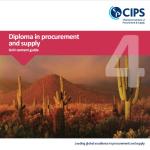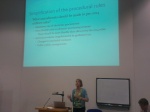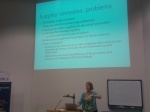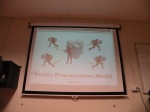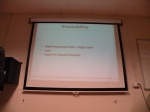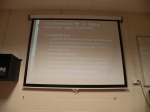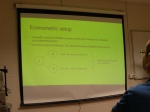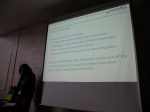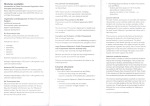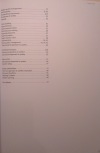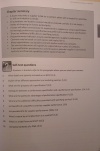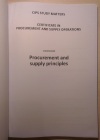Archive
Smart.ly Platform
Smartly Institute
via Smart.ly Platform
03.08.2018
Online Educational Course “Microeconomics 1: Supply and Demand”
Introducing Microeconomics
Microeconomics: The study of how individuals, households, and firms make decisions about using limited resources.
Economic resources include:
Human resources: Workers and managers.
Nonhuman resources: Land, technology, minerals, oil, etc.
Microeconomists assume that people and firms are rational and seek to maximize benefits.
Trade-offs: Choosing one thing requires giving up another.
Scarcity: The existence of limited resources.
When an individual or group makes a decision, their opportunity cost is equal to the value of the foregone option(s).
Economic units: People, households, and firms.
Marginal benefits: Small, incremental benefits.
Supply and Demand
The law of demand: When the price of a good increases, demand for it decreases, and vice versa.
Demand schedule: Lists the quantity demanded of a product or service at various prices.
Market demand schedule: A demand schedule that encompasses the entire market’s demand for a good or service at various price points.
Demand curve (DC): Plots the quantity of a good or service demanded at different prices.
Market demand curve: Shows the market demand schedule.
When demand curves shift:
to the left—market demand has decreased.
to the right—market demand has increased.
Market price: The price at which a good or service is offered in the marketplace.
Law of supply: When the market price for a good increases, the quantity that suppliers produce and sell increases, and vice versa.
Supply schedule: Lists the quantity of a product supplied at various price points.
Supply curve (SC): Plots the supply schedule.
Market supply: The summation of all of the individual supplies of a good or service.
Market supply curve: Shows how the total quantity supplied of a good changes as its price changes.
When supply curves shift:
to the left—market supply has decreased.
to the right—market supply has increased.
Factors Contributing to Equilibrium
Equilibrium: When the amount of goods supplied is equal to the quantity demanded.
Equilibrium price: The price where equilibrium occurs ($9 on the chart).
Equilibrium quantity: The quantity where equilibrium occurs (400 on the chart).
Equilibrium point (EP): The point at which the equilibrium price is equal to the equilibrium quantity.
Price acts as a motivator:
When there is a low price for goods or services, consumers buy more and sellers supply less.
When there is a high price for goods or services, consumers buy less and sellers supply more.
Law of supply and demand: The price of any good will naturally adjust until market equilibrium is reached.
Supply > demand: There is a surplus. Prices will drop until equilibrium is met.
Demand > supply: There is a shortage. Prices will rise until equilibrium is met.
Supply = demand: The market has reached equilibrium.
To recognize events that alter equilibrium:
1. Identify a shift in the DC and/or the SC.
2. Determine if the curve(s) shift left or right.
3. Use a graph to see how the shifts change the EP.
Certificate
New York Consulting Procurement Conference 2017
New York Consulting Procurement Conference 2017
29.06.2017
American Management Association Times Square, New York, USA
The New York Consulting Procurement Conference is one-of-its-kind event that allows Executives interested in Procuring Consulting Services to connect with peers and experts of the domain to exchange about challenges, best practices and trends in the Consulting industry.
Presentations
What is innovation in the Digital Environment? George Hemingway, Partner at Stratalis Consulting
The impact of digital transformation on Organization. Thomas Bertels, Partner at Valeocon Management Consulting
How can traditional banks leverage Fintech practices to compete in a digital world? Bijon Mehta, President at Association of FinTech Professionals
Digital in Manufacturing Industries : Supply chain 2.0 ? What else ? Laurent Thomas, VP Strategy at Solvay Novecare
Digitalizing Procurement : Deja vu ? Rajiv Gupta
How digital is transforming Consulting Services ? David Tang, CEO of Flevy
Photos
The Chartered Institute of Procurement & Supply
The Chartered Institute of Procurement & Supply (www.cips.org)
Certificate in Procurement and Supply Operations
The CIPS Certificate in Procurement and Supply Operations is a vocationally related qualification. It has been accredited by the Office of Qualifications and Examinations Regulator (Ofqual) in the UK and appears on the Register of Regulated Qualifications. Please refer to register.ofqual.gov.uk
Procurement and Supply Principles
Learning Outcomes
1.0 Know the roles of procurement and supply within organisations
1.1 Define the common terms that describe aspects of procurement and supply
- Definitions of common terms such as procurement, purchasing, buying, supply chain, materials management, distribution, logistics and contract management
1.2 Describe the roles of procurement and supply in organisations
- The typical proportion of costs accounted for by procurement of goods and services
- The roles of procurement and supply and procurement professionals
- Achieving value for money
- Sustainability in procurement and supply
- The roles of staff with devolved responsibilities for procurement
1.3 Describe the benefits of effective procurement for organisations
- How effective procurement impacts on profitability – The profit contribution effect
- Creating savings and improving efficiency
- Budgets and budget monitoring
- How effective procurement helps achieve targets
1.4 Identify the five rights of procurement and supply
- The five rights of procurement and supply
- Price/total cost, quality, timing, quantity and place
- Defining value for money
2.0 Know how products and services are received from suppliers and delivered to customers
2.1 Describe the delivery of products and services that organisations make to customers
- Defining products and services
- The customer role
- Seeing customers as a part of a supply chain
2.2 Describe the delivery of products and services made by external suppliers
- The need for supplies of products and services from external suppliers
- Outsourced services
- Seeing suppliers as apart of a supply chain
3.0 Know the main stages of the sourcing process
3.1 Describe the main stages of a sourcing process
- Identification of needs
- Producing specifications
- Requesting quotations
- Receiving quotations
- Assessing suppliers quotations
- Making contract award recommendations
- Contract authorisation
- Order placement, blanket orders/frameworks and call-off orders
- Performance and delivery
- Payment of suppliers
- Expediting deliveries
- Reviewing outcomes and processes
- Pre and post award stages of a sourcing process
4.0 Understand what makes up the main components of a supply chain
4.1 Explain the main components of a supply chain
- Customers and their customers
- Customers and consumers
- Suppliers and their use of suppliers
- Tiers of a supply chain
- The global aspects of supply chains
- Examples of supply chains in action
 Procurement and supply functions
Procurement and supply functions
Learning Outcomes
1.0 Know the main types of organisations and how they operate
1.1 Identify the main types of organisations
- Private public and third sector organisations
- Production and service organisations
1.2 Describe how organisations operate
- People, objectives and structure in organisations
- The formal and informal organisation
1.3 Identify the main operating functions with in organisations
- Differentiation and integration in organisations
- Typical functions in organisations such as production, operations, marketing and sales, customer support, human resources, personnel, finance, IT, and technical functions
- Differentiating procurement and supply
2.0 Know the main elements of a procurement and supply function
2.1 Describe the use of mission and vision statements and objectives by a procurement and supply function
- Objectives of procurement and supply functions
- Targets for procurement and supply functions
- Use of mission and vision statements for procurement and supply functions
2.2 Describe the main roles and structures of a procurement and supply function within an organisation
- Links to organisational goals
- Competition and regulatory roles
- Advice and guidance that a procurement and supply function can provide t other functions
- Procurement and supply as a service function
- Centralised, devolved and lead buying structures of procurement and supply functions
2.3 Define the main procedures that can be created by a procurement and supply function
- Delegations of authority and approvals
- Procedures that apply to running competitions between suppliers
- Auditing compliance with internal procedures
3.0 Know the main market factors that impact on a procurement and supply function
3.1 Identify the main economic sectors that impact on a procurement and supply function
- Public, private and not for profit or third sector
- Primary, secondary and tertiary sectors
3.2 Describe the impact of demand and supply on markets
- Demand and supply curves
- How demand and supply factors can change
- How demand and supply factors can impact on pricing and availability
3.3 Describe how market factors impact on the procurement and supply activities of an organisation
- The level of competition: perfect competition, imperfect competition, oligopoly, duopoly and monopolies
- The impact of demand on sales
- Market growth and decline
- Competitive forces on organisations
 Procurement and supply processes
Procurement and supply processes
Learning Outcomes
1.0 Know the main components of contractual agreements
1.1 Describe the main types of contracts
- Spot purchases
- Term contracts
- Framework arrangements/blanket orders/panel contracts and call offs
1.2 Identify the main kinds of pricing arrangements applied in commercial contracts
- Fixed pricing, lump sum pricing and schedule of rates
- Cost reimbursable and cost plus arrangements
- Variable pricing arrangements
- Target pricing arrangements
- Risk and reward pricing arrangements
1.3 Describe the different documents that compose a contract for the purchase or supply of goods or services
- Defining contracts and agreements
- The use of tendering and quotations
- The documents that comprise a contract – the specification, key performance indicators (KPIs), contract terms, pricing and use of other schedules
- Contracts for the supply of goods or services
2.0 Know the main sources of information on suppliers and customers
2.1 Describe the use of the Internet to locate details about suppliers and customers
- The use of Internet search engines to locate details about suppliers and customers
- The types of information presented by suppliers and customers on their websites
2.2 Describe the use of credit rating agencies
- The role of credit rating agencies and credit rating scores
- Publications on individual organisations and markets
- The use of credit rating scores
2.3 Describe the use of intranet, extranet and internet sites to publicise information
- Distinguishing between the intranet, extranet and internet sites
- Information for help and advice on an intranet site
- The information for the wider community on company websites
3.0 Know the main types of systems for supplier selection, ordering and payment
3.1 Describe the use of electronic sourcing systems for supplier selection
- Defining e-sourcing
- Attracting quotations or tenders through an e-tendering or e-sourcing system
- The publication of e-notices
3.2 Identify systems used in procurement and supply
- Systems for purchase ordering
- Capturing data on expenditures
- The use of portal sites to locate suppliers or customers
- Examples of supplier database systems
3.3 Describe P2P (purchase to pay) systems for ordering from suppliers and payment to suppliers
- The P2P process from the creation of requisitions, to raising requests for quotations or tenders, receipt of quotations or tenders, delivery documentation, invoicing and payment
- Examples of P2P systems
 Procurement and supply administration
Procurement and supply administration
Learning Outcomes
1.0 Understand the need for the effective and efficient administration of purchases made with external suppliers
1.1 Define effective and efficient administration
- Defining administration
- Reviewing the steps taken to forming agreements made with suppliers
- Defining effectiveness and efficiency
1.2 Explain the administration of the pre contract stages of a sourcing process
- The creation of requisitions and requirements
- The use of specifications, key performance indicators (KPIs) and contract terms
- The creation of requests for quotations or invitations to tender
- The use of prequalification questionnaires
- The submission of quotations or tenders for requirements
- The assessment of quotations and tenders
1.3 Explain the administration of the award and post award stages of a sourcing process
- The creation of orders or tender award documentation
- Delivery notes and order acknowledgements
- Receiving invoices
- Invoice matching and dealing with non-compliances
1.4 Describe the need for approvals in the administration of procurement and supply
- Typical procedures for authorising budgets, requisitions, orders and tenders
- The separation of duties
- Contract recommendation and authorisation
- Levels of delegated authority for contracts
- Ensuring an efficient approval process
2.0 Know the main techniques used for ordering supplies
2.1 Describe what is meant by direct and indirect supplies
- Definitions of direct and indirect supplies
- Examples of direct and indirect supplies
- Goods for resale and goods not for resale
2.2 Identify the main costs associated with holding inventories
- Analysing the costs of inventory
- The costs associated with stock outs and excess inventories
2.3 Describe techniques commonly used for ordering inventories
- Re-order point control and re-order quantities
- MRP and MRPII systems
- Just in time approaches
- Enterprise resource planning systems
3.0 Know the main approachesto achieving timely deliveries of products or services
3.1 Define the processes that should be used when expediting supplies
- Defining expediting
- Problem solving
- Tracking the relevant documentation
- Obtaining written confirmations
- Review agreements made
3.2 Describe the importance of effective communication with suppliers and customers to achieve timely deliveries
- The perceptual process
- Interacting with other people and building rapport
- Effective communication
3.3 Describe the use of forecasting to achieve timely deliveries of supplies
- The use of forecasting
- Subjective and objective techniques in forecasting
- The difficulties associated with forecasting
 Procurement and supply stakeholders
Procurement and supply stakeholders
Learning Outcomes
1.0 Know the main stakeholders in procurement and supply
1.1 Identify the main external stakeholders in procurement and supply
- Defining stakeholders
- Typical stakeholders such as suppliers, customers, consumers, communities, government and other groups
- The distinction between customers and consumers
1.2 Identify the main internal stakeholders that can be involved in purchases from suppliers and supplies delivered to customers
- The role of procurement and supply in dealing with other business functions such as marketing, sales, production, operations, human resources, finance, design and development, distribution, facilities, senior management and the board of management
2.0 Know the main approaches for conflict resolution with stakeholders in procurement and supply
2.1 Describe how conflict can arise in the work of procurement and supply
- Defining workplace conflict
- The sources of conflict in organisations and between personnel
- The sources of conflict between organisations and their personnel
2.2 Describe approaches to conflict resolution with stakeholders in procurement and supply
- Approaches to conflict resolution
- Clarifying roles and responsibilities
- Group cohesion
- Achieving buy in from stakeholders
2.3 Explain the contribution that effective teamwork can make when dealing with conflict with stakeholders in procurement and supply
- Group cohesiveness and performance
- The characteristics of an effective work group
- The stages of team development
3.0 Know why quality management is important in procurement and supply
3.1 Define the main components of quality management in procurement and supply
- Definitions of quality, quality control, quality assurance and total quality management
- Quality as a philosophy
- Getting things right first time
3.2 Identify the costs of quality
- Prevention and appraisal costs
- The internal and external costs of quality
- Organisational reputation
3.3 Describe the main techniques associated with quality assurance and quality management
- From quality inspection to quality assurance
- Quality circles
- The use of control charts
- Achieving continuous improvement
4.0 Know why clear ethical codes of practice should be used in procurement and supply
4.1 Describe the role of ethical codes in procurement and supply
- The scope of business ethics
- Treatment of stakeholder groups
- Behaviours towards suppliers, customers and competitors
4.2 Describe the details that should be included within standard ethical codes
- The use of ethical codes such as the CIPS Code of Ethics
- Regulations in ethical standards
- Codes for sustainable procurement
4.3 Describe the impact of corporate governance on a procurement and supply function
- The principles of corporate governance
- Mechanisms and controls in the corporate governance of procurement and supply
Exam Letter
Exam Results
Exam Results Letter
Certificate
The Chartered Institute of Procurement & Supply
 The Chartered Institute of Procurement & Supply
The Chartered Institute of Procurement & Supply
Church St, Easton on the Hill, Stamford, UK
CIPS Student Member Letter.pdf
CIPS Student Member Certificate.pdf
CIPS is the premier global organisation serving the procurement and supply profession. Dedicated to promoting best practice, CIPS provides a wide range of services for the benefit of members and the wider business community.
CIPS Qualifications
Throughout the world CIPS qualifications are recognised as driving leading edge thinking and professionalism in procurement. MCIPS is recognised worldwide as the standard for top quality procurement professionals.
CIPS offers five qualifications to support your professional development in procurement and supply. On successful completion of the Diploma, Advanced and Professional diplomas and in conjunction with three years’ experience in a role of responsibility in procurement and supply, you may apply for full membership of CIPS to use the designatory letters, MCIPS.
To find out more about entry requirements, please choose a link:
 Certificate in Procurement and Supply Operations
Certificate in Procurement and Supply Operations
The ideal qualification if you’re just starting your career in procurement or if procurement and supply are part of your role. It will enable you to recognise and describe the key processes in procurement and build your professional knowledge and competence.
Unit Title:
- NC1 Procurement and supply principles
- NC2 Procurement and supply functions
- NC3 Procurement and supply processes
- NC4 Procurement and supply administration
- NC5 Procurement and supply stakeholders
Typical job titles:
- Administrative assistant
- Purchasing assistant
- Contracts administrator
- Stock controller
- Merchandiser
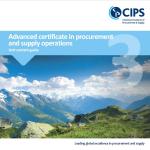 Advanced Certificate in Procurement and Supply Operations
Advanced Certificate in Procurement and Supply Operations
This qualification is designed for those in an operational role who need the capability to carry out procurement and supply tasks. You will develop the knowledge to understand demand management, arrange supply logistics and implement new contracts.
Unit Title:
- AC1 Procurement and supply environments
- AC2 Procurement and supply operations
- AC3 Procurement and supply workflow
- AC4 Inventory and logistics operations
- AC5 Procurement and supply relationships
Typical job titles:
- Administrator
- Assistant buyer
- Assistant contract officer
- Contract analyst
- Stock / inventory controller / planner
Diploma in Procurement and Supply
A valuable management tool for those moving into junior and middle management procurement roles or those supervising the procurement function. It focusses on organisational procedures and processes including negotiation, planning, risk management and data analysis.
Unit Title:
- D1 Contexts of procurement and supply
- D2 Business needs in procurement and supply
- D3 Sourcing in procurement and supply
- D4 Negotiating and contracting in procurement and supply
- D5 Managing contracts and relationships in procurement and supply
Typical job titles:
- Buyer
- Procurement / purchasing executive
- Procurement specialist
- Contract officer
- Supply chain / inventory / logistics analyst
- Supply chain / inventory / logistics planner
 Advanced Diploma in Procurement and Supply
Advanced Diploma in Procurement and Supply
Provides senior buyers, contract and supply chain managers with the expertise to improve organisational procurement and to fulfil organisational objectives. It gives you the knowledge base to reduce cost, improve quality and timescales, manage the supply chain and deal with legal issues.
Compulsory units:
- AD1 Management in procurement and supply
- AD2 Managing risks in supply chains
- AD3 Improving the competitiveness of supply chains
Optional units:
- AD4 Category management in procurement and supply
- AD5 Sustainability in supply chains
- AD6 Operations management in supply chains
Typical job titles:
- Buyer
- Procurement / purchasing executive
- Procurement specialist
- Contract officer
- Supply chain / inventory / logistics analyst
- Supply chain / inventory / logistics planner
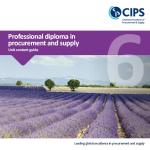 Professional Diploma in Procurement and Supply
Professional Diploma in Procurement and Supply
Aimed at senior procurement professionals and heads of department. It is targeted at building strategic direction and advice, in areas such as change management, stakeholder management and team leadership.
On successful completion of the Diploma, Advanced and Professional diplomas along with 3 years’ experience in a postion of responsiblility in procurement and supply you will be awarded MCIPS status.
Compulsory units:
- PD1 Leadership in procurement and supply
- PD2 Corporate and business strategy
- PD3 Strategic supply chain management
Optional units:
- PD4 Supply chain diligence
- PD5 Programme and project management
- PD6 Legal aspects in procurement and supply (UK)
Typical job titles:
- Strategic / senior /purchasing or procurement manager
- Head of commercial
- Supply chain manager
- Head of logistics / transport
- Operations manager
Student Member Letter & Certificate:
6th International Public Procurement Conference
6th International Public Procurement Conference
14.08 – 16.08.2014
Dublin City University, Dublin, Ireland
Delegate List: Delegate List.pdf
Conference Programme: Conference Programme.pdf
Book of Proceedings: Book of Proceedings (pages 1-590).pdf, Book of Proceedings (pages 591-1153).pdf, Book of Proceedings (pages 1154-1351).pdf
Prepared materials for the conference
Title: Сost-based approach for determining evaluation criteria weights of commercial offers based on the analysis of the total cost of ownership for the product
Paper Number: 232.00
Presentation Type: Poster
Paper Status: Accepted as Oral Presentation
Abstract: Abstract.pdf
Full paper: Full paper.pdf
Title: Essential issues of evaluating the effect of planned obsolescence of products during procurement procedures
Paper Number: 231.00
Presentation Type: Poster
Paper Status: Accepted as Poster Presentation
Abstract: Abstract.pdf
Full paper: Full paper.pdf
Title: Essential issues of developing improved methods of scoring commercial offers during the procurement procedure
Paper Number: 229.00
Presentation Type: Poster
Paper Status: Accepted as Oral Presentation
Abstract: Abstract.pdf
Full paper: Full paper.pdf
Title: Essential issues of commercial offers comparison during procurement procedures
Paper Number: 230.00
Presentation Type: Poster
Paper Status: No Paper Status Allocated
Abstract: Abstract.pdf
Full paper: Full paper.pdf
Presentations
The World Bank. Chris Browne, Chief Procurement Office World Bank
Rethinking Procurement. Sue Arrowsmith
Comparative Analysis Of Public Procurement Efficiency Under Different Regulation Regimes. Andrey Tkachenko
Contract Management Innovation In Public Procurement: The Costa Rican Experience. Ileana Palaco
Collaborative Public Procurement: A Comparative Review Of International Practices On Pooled Procurement. Sandeep Verma
An SME Perspective on Public Procuremment. Padraig Coakley
Using Spatial Econometrics To Detect Collusive Bidder Behavior In Public Procurement Auctions. Johan Lundberg
Ex-Ante Contracts And Ex-Post Performance In Public Procurement: Theory And Evidence From Sweden. Mats Bergman
Is Public Procurement An Effective Development Policy Tool? David Salazar
TRUST FUNDS FOR SECURITY. HELPING THE AFGHAN NATIONAL
SECURITY FORCES TO BE SELF-SUSTAINABLE? Ewa M. Suwara
DEFENSE SYSTEM INNOVATIONS: HOW PROCUREMENT MAKES A DIFFERENCE. Peter Hall
DEFENSE MANAGEMENT RESEARCH CAPACITIES AND TOPICS. Christian v. Deimling
IMPLICATIONS FOR OFFSETS IN DEFENCE PROCUREMENT DURING AUSTERE TIME. Kogila Balakrishnan
Contacts
Joshua I. Schwartz. E.K. Gubin Professor of Government Contracts Law; Co-Director, Government Procurement Law LL.M. Program; Co-Faculty Advisor, Federal Circuit Bar Journal, The George Washington University Law School, Washington DC
Dr. Tunde Tatrai. Associate Professor, Institute of Business Economics, Department of Logistics and Supply Chain Management, Budapest
Mats Bergman. Professor, Economics School of Social Sciences, Department of Economics, Stockholm
Ewa Suwara. Head of Section Multilateral and General Affairs, Asia and Pacific Department, Ministry of Foreign Affairs of Poland, Warsaw
Conghu/Tiger Wang. Associate Professor, Department of Public Administration Renmin University of China. Specialist Consultant, China Government Procurement Website http://www.ccpg.gov.cn. Faculty Fellow, Public Procurement Research Center Florida Atlantic University
Andrey Tkachenko. Researcher, National Research University, Higher School of Economics, Institute of Industrial and Market Studies, Moscow
Henry Lv. Assistant Professor, State Information Center, Beijing
Richo Andi Wibowo. Candidate in Administrative Law, Utrecht University, Institute of Constitutional and Administrative Law, Utrecht
Materials
School of Law. The University of Nottingham. Executive Programme in Public Procurement Law and Policy
2nd Interdisciplinary Symposium in Public Procurement
Public Procurement Oversight Authority
European Procurement and Public Private Partnership Law Review
Public Procurement Management. Inernational Master
Photos
6th International Scientific and Practical Conference «Science and Society»
 6th International Scientific and Practical Conference «Science and Society» (6-я международная научно-практическая конференция “Наука и общество”)
6th International Scientific and Practical Conference «Science and Society» (6-я международная научно-практическая конференция “Наука и общество”)
23-24.03.2014
London, UK (Лондон, Великобритания)
Conference Papers.pdf, Article.pdf
Article “Essential issues of developing improved methods of scoring commercial offers during the procurement procedure” (Статья “Актуальные вопросы разработки совершенной методики балльной оценки коммерческих предложений при проведении процедуры закупки”)
This article contains:
– an analysis of the scoring techniques of commercial proposals that are currently used in Russia and the European Union;
– the results of developing an improved method that combines only positive characteristics of the scoring techniques;
– reviews of critical situations when any scoring method can give an error;
– description of a new independent method of scoring commercial proposals which prevents miscalculations in critical situations.
www.procurementsense.com
12.02.2014
Links: Page
The article “Electronic Auctions: Evaluation of Practical Experience Providers”
The article presents results of a survey about electronic auctions. The survey was presented for suppliers who were asked questions concerning the effectiveness of participation in the procurement of suppliers, as well as to share any technical or functional complexity that exists for distributors who participate in electronic auctions. Non-standard situations, especially a supplier’s positive or negative experience can be noted for participation in electronic auctions. They offered their vision of possible improvements to now existing rules.
Procurement and Supply Stakeholders Course Book
Procurement and Supply Stakeholders Course Book
Author(s): CIPS/Profex, www.cips.org
Category: A CIPS Profex Study Packs
Review
Pages: 136
Edition: 1st Edition
ISBN: 9781861242211
Published: Monday, February 25, 2013
This is the course book for the ‘Procurement and supply stakeholders’ unit which forms part of the CIPS ‘Certificate in procurement and supply operations‘ qualification.
On completion of this unit, candidates will be able to:
A) Explain how effective relationships can be formed with suppliers, customers and other stakeholders
B) Identify the main principles of quality management.
Procurement and Supply Administration Course Book
 Procurement and Supply Administration Course Book
Procurement and Supply Administration Course Book
Author(s): CIPS/Profex, www.cips.org
Category: A CIPS Profex Study Packs
Review
Pages: 130
Edition: 1st Edition
ISBN: 9781861242204
Published: Monday, February 25, 2013
This is the course book for the ‘Procurement and supply administration’ unit which forms part of the CIPS ‘Certificate in procurement and supply operations‘ qualification.
On completion of this unit, candidates will be able to explain how effective administration can ensure that timely deliveries are achieved by suppliers. This unit will explain the necessary documentation and administrative processes that are involved in forming agreements with external suppliers.
Procurement and Supply Processes Course Book
Procurement and Supply Processes Course Book
Author(s): CIPS/Profex, www.cips.org
Category: A CIPS Profex Study Packs
Review
Pages: 130
Edition: 1st Edition
ISBN: 9781861242198
Published: Monday, February 25, 2013
This is the course book for the ‘Procurement and supply processes’ unit which forms part of the CIPS ‘Certificate in procurement and supply operations‘ qualification.
On completion of this unit, candidates will be able to identify:
A) The fundamentals of the contract formation process
B) The use of systems in procurement and supply
C) The sources of information about potential suppliers.
Procurement and Supply Functions Course Book
 Procurement and Supply Functions Course Book
Procurement and Supply Functions Course Book
Author(s): CIPS/Profex, www.cips.org
Category: A CIPS Profex Study Packs
Review
Pages: 124
Edition: 1st Edition
ISBN: 9781861242181
Published: Monday, February 25, 2013
This is the course book for the ‘Procurement and supply functions’ unit which forms part of the CIPS ‘Certificate in procurement and supply operations‘ qualification.
On completion of this unit, candidates will be able to identify:
A) The main types of organisations
B) The main elements of a procurement and supply function
C) The main market factors and their impact on the procurement and supply function.
Procurement and Supply Principles Course Book

Procurement and Supply Principles Course Book
Authors: CIPS/Profex, www.cips.org
Category: A CIPS Profex Study Packs , Purchasing
Review
Pages: 146
Edition: 1st
ISBN: 9781861242174
Published: Monday, February 25, 2013
This is the course book for the ‘Procurement and supply principles’ unit which forms part of the CIPS ‘Certificate in procurement and supply operations‘ qualification.
On completion of the unit, candidates will be able to describe fundamental principles of procurement, supply and supply chains. In any organisation, a significant proportion of costs are accounted for by the purchases of products, services or constructional works. Equally, any organisation will also be supplying products, services or works to their customers whether these are other organisations, consumers or the public.













